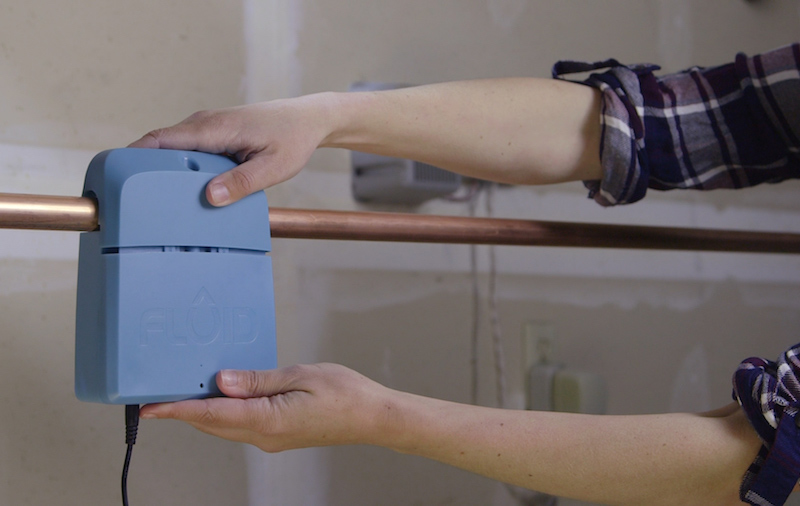Water Leak Detection: Just How to Recognize and Deal With Leaks Prior To They Trigger Damages
Ingenious Solutions for Very Early Detection of Water Leakages in Buildings and Framework
From advanced leak detection innovations to the release of IoT sensors for real-time monitoring, the landscape of leak prevention is developing quickly. Automated water circulation analysis systems are improving just how leakages are recognized and resolved, leading the means for an aggressive approach to water leakage detection.
Advanced Leak Detection Technologies
Advanced leak detection modern technologies, outfitted with cutting-edge sensing units and formulas, play an important role in swiftly determining and identifying water leaks in numerous settings. Electromagnetic sensors can determine changes in electro-magnetic fields created by water, providing yet an additional layer of leakage discovery capability.

IoT Sensors for Real-Time Tracking
In the world of modern-day water leakage detection, the combination of IoT sensing units for real-time tracking represents a critical improvement in boosting proactive leak detection abilities. These sensing units supply continuous tracking of water systems, supplying real-time information on water circulation prices, stress variants, and temperature level changes. By leveraging IoT innovation, these sensors can find also the tiniest abnormalities in water use patterns, making it possible for very early recognition of possible leakages prior to they rise right into significant concerns.
IoT sensing units transmit information to a centralized system, where advanced algorithms analyze the information and generate alerts or alerts when abnormalities are detected. This real-time surveillance capacity allows building proprietors or center managers to quickly deal with leaks, minimizing water damages, decreasing repair service expenses, and conserving water resources.
In addition, IoT sensing units can be integrated with structure management systems, enabling automated responses to detected leaks, such as turning off water valves or activating pumps to minimize the effect of leaks. Overall, the execution of IoT sensors for real-time monitoring dramatically enhances the efficiency and efficiency of water leak discovery in structures and infrastructure.
Equipment Discovering Algorithms for Leak Forecast

One secret benefit of making use of maker knowing for leak forecast is its capability to continuously find out and enhance its precision in time. As more information is gathered and fed right into the formula, it can refine its forecasts and adapt to changing conditions, ultimately link increasing the dependability of leakage detection systems.
Moreover, equipment knowing algorithms can assist in determining subtle signs of leaks that may go unnoticed by conventional tracking approaches. water leak detection. By assessing complicated information embed in real-time, these formulas can offer very early warnings and informs, enabling punctual intervention and preventive maintenance to minimize potential water damage and linked expenses
Making Use Of Thermal Imaging for Leak Detection
Thermal imaging technology provides an appealing technique for discovering water leakages in different systems and infrastructures. By using infrared radiation and temperature variances, thermal imaging video cameras can determine concealed leaks that are not quickly noticeable to the nude eye.
One of the vital advantages of thermal imaging for leak discovery is its non-intrusive nature. In general, the use of thermal imaging modern technology enhances the performance and accuracy of next page water leak discovery, making it an important device for keeping the stability of helpful hints buildings and infrastructures.
Automated Water Flow Evaluation Solutions
Exactly how can automated water circulation analysis systems reinvent the detection and monitoring of leaks in numerous systems and frameworks? Automated water flow analysis systems offer a positive approach to leak discovery by continuously keeping track of water circulation rates and patterns. By developing standard data, these systems can quickly recognize discrepancies that might indicate a leak, making it possible for prompt treatment to prevent considerable damage.
These systems use sophisticated algorithms to evaluate real-time information and supply prompt alerts when abnormalities are discovered, enabling swift activity to be taken. In addition, computerized water flow evaluation systems can be incorporated with structure administration systems or IoT systems, enhancing general effectiveness and allowing remote tracking capabilities.
In addition, the information collected by these systems can be used for anticipating upkeep objectives, helping to identify potential powerlessness in the infrastructure before leakages take place. Overall, the implementation of automated water circulation evaluation systems can dramatically boost leakage detection and monitoring methods, eventually causing cost savings, reduced water wastefulness, and raised sustainability in structures and facilities.

Verdict
To conclude, the combination of sophisticated leakage discovery modern technologies, IoT sensing units, artificial intelligence algorithms, thermal imaging, and automated water flow analysis systems provides ingenious options for early detection of water leaks in buildings and infrastructure. These modern technologies make it possible for real-time monitoring, forecast of leakages, and reliable discovery techniques to stop water damage and waste. Executing these services can assist in preserving the integrity and sustainability of water systems in numerous setups.